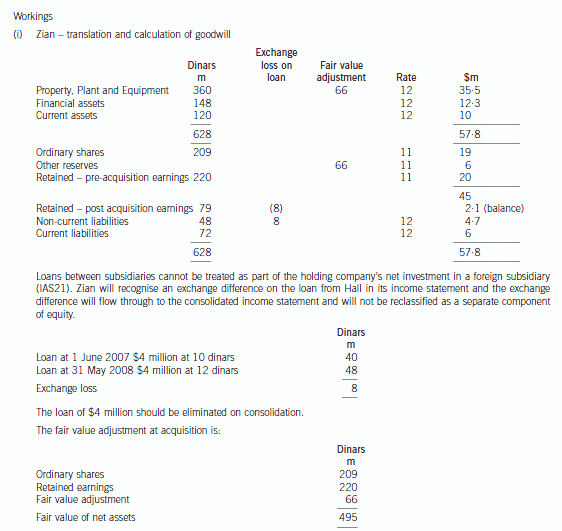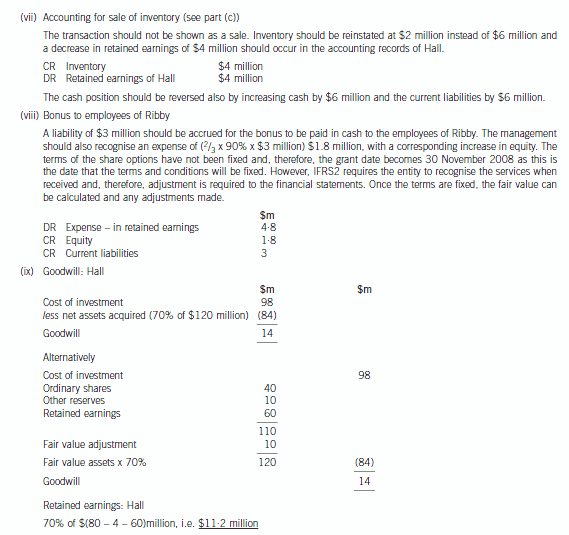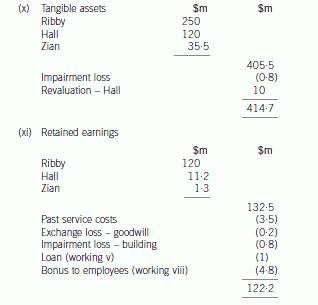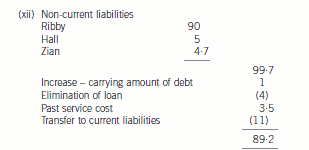ACCA F1知识点:影响企业的政治和法律因素
发布时间:2021-02-13
想要了解ACCA考试常见考点的考生赶紧看过来,51题库考试学习网今天给大家带来关于ACCA考试常见考点的相关分享,希望能够帮到大家!
acca F1知识点:影响企业的政治和法律因素
(a)解释政治系统和政府政策如何影响企业:P21
政府政策影响:经济环境、法律框架、行业结构和某些操作问题。
政治不稳定:危机的一个原因。
(b)描述法律当局(包括超国家组织、国家级地区政府)的来源
(c)解释法律如何保护雇员、为经理和组织设立的雇佣法律的含义
(d)认识数据保护和安全的准则 P27
隐私的定义:个人未授权不可公开的信息
(e)解释法律如何提高和保护工作环境的健康和安全
(f)意识到个人和组织对遵守数据保护和安全、健康和安全的责任
(g)概述消费者保护的准则,如货物销售和简单的合同
社会和人口因素
(a)解释社会和人口趋势对企业结果和经济的中长期影响
(b)描述社会结构、价值、态度、口味的变化对组织的影响
(c)认识并解释政府应对中长期人口变化的影响所采取的措施
技术因素
(a)解释技术变化对组织结构和策略的影响:裁员、减少阶层、外包
外包的定义:将某一特定操作和服务交给外部组织解决P40
(b)描述信息技术和信息系统的发展对企业流程的影响
环境因素
(a)罗列企业能影响物理环境或被其所影响的方式
(b)描述企业为限制环境的危险因素而能能更高效运转的方法
(c)认识经济可持续发展对利益相关者的好处
竞争力
(a)认识企业在市场中的优势、弱势、机遇、威胁及竞争优势的主要来源
(b)描述影响组织竞争力的活动:采购、生产、市场、服务
价值链的定义:描述组织中给输出增加价值的活动P46
(c)利用Porter’s 五大竞争力模型,解释某一行业或部门影响竞争力强弱的因素
竞争环境的五大因素:新兴商品/替代品的威胁、客户/供应商的讨价还价、竞争对手
以上就是51题库考试学习网带给大家的全部内容,希望能够帮到大家!预祝大家在ACCA考试中取得满意的成绩,如果想要了解更多关于ACCA考试的资讯,敬请关注51题库考试学习网!
下面小编为大家准备了 ACCA考试 的相关考题,供大家学习参考。
A manufacturing company, Man Co, has two divisions: Division L and Division M. Both divisions make a single standardised product. Division L makes component L, which is supplied to both Division M and external customers.
Division M makes product M using one unit of component L and other materials. It then sells the completed
product M to external customers. To date, Division M has always bought component L from Division L.
The following information is available:

Division L charges the same price for component L to both Division M and external customers. However, it does not incur the selling and distribution costs when transferring internally.
Division M has just been approached by a new supplier who has offered to supply it with component L for $37 per unit. Prior to this offer, the cheapest price which Division M could have bought component L for from outside the group was $42 per unit.
It is head office policy to let the divisions operate autonomously without interference at all.
Required:
(a) Calculate the incremental profit/(loss) per component for the group if Division M accepts the new supplier’s
offer and recommend how many components Division L should sell to Division M if group profits are to be
maximised. (3 marks)
(b) Using the quantities calculated in (a) and the current transfer price, calculate the total annual profits of each division and the group as a whole. (6 marks)
(c) Discuss the problems which will arise if the transfer price remains unchanged and advise the divisions on a suitable alternative transfer price for component L. (6 marks)
(a)MaximisinggroupprofitDivisionLhasenoughcapacitytosupplybothDivisionManditsexternalcustomerswithcomponentL.Therefore,incrementalcostofDivisionMbuyingexternallyisasfollows:CostperunitofcomponentLwhenboughtfromexternalsupplier:$37CostperunitforDivisionLofmakingcomponentL:$20.ThereforeincrementalcosttogroupofeachunitofcomponentLbeingboughtinbyDivisionMratherthantransferredinternally:$17($37–20).Fromthegroup’spointofview,themostprofitablecourseofactionisthereforethatall120,000unitsofcomponentLshouldbetransferredinternally.(b)CalculatingtotalgroupprofitTotalgroupprofitswillbeasfollows:DivisionL:Contributionearnedpertransferredcomponent=$40–$20=$20Profitearnedpercomponentsoldexternally=$40–$24=$16(c)ProblemswithcurrenttransferpriceandsuggestedalternativeTheproblemisthatthecurrenttransferpriceof$40perunitisnowtoohigh.Whilstthishasnotbeenaproblembeforesinceexternalsupplierswerecharging$42perunit,itisaproblemnowthatDivisionMhasbeenofferedcomponentLfor$37perunit.IfDivisionMnowactsinitsowninterestsratherthantheinterestsofthegroupasawhole,itwillbuycomponentLfromtheexternalsupplierratherthanfromDivisionL.ThiswillmeanthattheprofitsofthegroupwillfallsubstantiallyandDivisionLwillhavesignificantunusedcapacity.Consequently,DivisionLneedstoreduceitsprice.Thecurrentpricedoesnotreflectthefactthattherearenosellinganddistributioncostsassociatedwithtransferringinternally,i.e.thecostofsellinginternallyis$4lessforDivisionLthansellingexternally.So,itcouldreducethepriceto$36andstillmakethesameprofitonthesesalesasonitsexternalsales.ThiswouldthereforebethesuggestedtransferpricesothatDivisionMisstillsaving$1perunitcomparedtotheexternalprice.Atransferpriceof$37wouldalsopresumablybeacceptabletoDivisionMsincethisisthesameastheexternalsupplierisoffering.
(c) Discuss the usefulness of the managerial grid in assessing the attributes of managers. (5 marks)
Part (c):
This all assumes that leadership styles can be categorised into the two dimensions and that the results can be plotted on the grid.
The position of team management is accepted as the best form. of leadership. This may not be practical or indeed advisable. In
many industries, concern for the task may be more important than concern for people, and vice versa. It will always depend on
the individual situation; behaving in a way which is alien to one’s attitudes will be seen as inconsistent and confusing.
However, if the grid has relevance to leadership skills, it can provide the basis for training and for management development. One
way in which it could be useful is (for example) to support a 9,1 leader with a 1,9 subordinate.
The managerial grid also links in to the motivational ideas of Douglas Macgregor. Theory X assumes that the average person has
an inherent dislike of work. The approach is likely to be task driven, and thus managers will have a high score on the x axis.
Theory Y is based on the idea that the goals of the individual and the organisation can be integrated. In this case, the approach
is likely to be concerned with the individual and thus managers will have a high score on the y axis.
(a) Kayte operates in the shipping industry and owns vessels for transportation. In June 2014, Kayte acquired Ceemone whose assets were entirely investments in small companies. The small companies each owned and operated one or two shipping vessels. There were no employees in Ceemone or the small companies. At the acquisition date, there were only limited activities related to managing the small companies as most activities were outsourced. All the personnel in Ceemone were employed by a separate management company. The companies owning the vessels had an agreement with the management company concerning assistance with chartering, purchase and sale of vessels and any technical management. The management company used a shipbroker to assist with some of these tasks.
Kayte accounted for the investment in Ceemone as an asset acquisition. The consideration paid and related transaction costs were recognised as the acquisition price of the vessels. Kayte argued that the vessels were only passive investments and that Ceemone did not own a business consisting of processes, since all activities regarding commercial and technical management were outsourced to the management company. As a result, the acquisition was accounted for as if the vessels were acquired on a stand-alone basis.
Additionally, Kayte had borrowed heavily to purchase some vessels and was struggling to meet its debt obligations. Kayte had sold some of these vessels but in some cases, the bank did not wish Kayte to sell the vessel. In these cases, the vessel was transferred to a new entity, in which the bank retained a variable interest based upon the level of the indebtedness. Kayte’s directors felt that the entity was a subsidiary of the bank and are uncertain as to whether they have complied with the requirements of IFRS 3 Business Combinations and IFRS 10 Consolidated Financial Statements as regards the above transactions. (12 marks)
(b) Kayte’s vessels constitute a material part of its total assets. The economic life of the vessels is estimated to be 30 years, but the useful life of some of the vessels is only 10 years because Kayte’s policy is to sell these vessels when they are 10 years old. Kayte estimated the residual value of these vessels at sale to be half of acquisition cost and this value was assumed to be constant during their useful life. Kayte argued that the estimates of residual value used were conservative in view of an immature market with a high degree of uncertainty and presented documentation which indicated some vessels were being sold for a price considerably above carrying value. Broker valuations of the residual value were considerably higher than those used by Kayte. Kayte argued against broker valuations on the grounds that it would result in greater volatility in reporting.
Kayte keeps some of the vessels for the whole 30 years and these vessels are required to undergo an engine overhaul in dry dock every 10 years to restore their service potential, hence the reason why some of the vessels are sold. The residual value of the vessels kept for 30 years is based upon the steel value of the vessel at the end of its economic life. At the time of purchase, the service potential which will be required to be restored by the engine overhaul is measured based on the cost as if it had been performed at the time of the purchase of the vessel. In the current period, one of the vessels had to have its engine totally replaced after only eight years. Normally, engines last for the 30-year economic life if overhauled every 10 years. Additionally, one type of vessel was having its funnels replaced after 15 years but the funnels had not been depreciated separately. (11 marks)
Required:
Discuss the accounting treatment of the above transactions in the financial statements of Kayte.
Note: The mark allocation is shown against each of the elements above.
Professional marks will be awarded in question 3 for clarity and quality of presentation. (2 marks)
(a) The accounting for the transaction as an asset acquisition does not comply with the requirements of IFRS 3 Business Combinations and should have been accounted as a business combination. This would mean that transaction costs would be expensed, the vessels recognised at fair value, any deferred tax recognised at nominal value and the difference between these amounts and the consideration paid to be recognised as goodwill.
In accordance with IFRS 3, an entity should determine whether a transaction is a business combination by applying the definition of a business in IFRS 3. A business is an integrated set of activities and assets which is capable of being conducted and managed for the purpose of providing a return in the form. of dividends, lower costs or other economic benefits directly to investors or other owners, members or participants. A business consists of inputs and processes applied to those inputs which have the ability to create outputs. Although businesses usually have outputs, outputs are not required to qualify as a business.
When analysing the transaction, the following elements are relevant:
(i) Inputs: Shares in vessel owning companies, charter arrangements, outsourcing arrangements with a management company, and relationships with a shipping broker.
(ii) Processes: Activities regarding chartering and operating the vessels, financing the business, purchase and sales of vessels.
(iii) Outputs: Ceemone would generate revenue from charter agreements and has the ability to gain economic benefit from the vessels.
IFRS 3 states that whether a seller operated a set of assets and activities as a business or intends to operate it as a business is not relevant in evaluating whether it is a business. It is not relevant therefore that some activities were outsourced as Ceemone could chose to conduct and manage the integrated set of assets and activities as a business. As a result, the acquisition included all the elements which constitute a business, in accordance with IFRS 3.
IFRS 10 Consolidated Financial Statements sets out the situation where an investor controls an investee. This is the case, if and only if, the investor has all of the following elements:
(i) power over the investee, that is, the investor has existing rights which give it the ability to direct the relevant activities (the activities which significantly affect the investee’s returns);
(ii) exposure, or rights, to variable returns from its involvement with the investee;
(iii) the ability to use its power over the investee to affect the amount of the investor’s returns.
Where a party has all three elements, then it is a parent; where at least one element is missing, then it is not. In every case, IFRS 10 looks to the substance of the arrangement and not just to its legal form. Each situation needs to be assessed individually. The question arises in this case as to whether the entities created are subsidiaries of the bank. The bank is likely to have power over the investee, may be exposed to variable returns and certainly may have the power to affect the amount of the returns. Thus the bank is likely to have a measure of control but the extent will depend on the constitution of the entity.
(b) Kayte’s calculation of the residual value of the vessels with a 10-year useful life is unacceptable under IAS 16 Property, Plant and Equipment because estimating residual value based on acquisition cost does not comply with the requirements of IAS 16. Kayte should prepare a new model to determine residual value which would take account of broker valuations at the end of each reporting period and which would produce zero depreciation charge when estimated residual value was higher than the carrying amount.
IAS 16 paragraph 6 defines residual value as the estimated amount which an entity would currently obtain from disposal of the asset, after deducting the estimated costs of disposal, if the asset were already at the age and in the condition expected at the end of its useful life.
IAS 16 requires the residual value to be reviewed at least at the end of each financial year end with the depreciable amount of an asset allocated on a systematic basis over its useful life. IAS 16 specifies that the depreciable amount of an asset is determined after deducting its residual value.
Kayte’s original model implied that the residual value was constant for the vessel’s entire useful life. The residual value has to be adjusted especially when an expected sale approaches, and the residual value has to come closer to disposal proceeds minus disposal costs at the end of the useful life. IAS 16 says that in cases when the residual value is greater than the asset’s carrying amount, the depreciation charge is zero unless and until its residual value subsequently decreases to an amount below the asset’s carrying amount. The residual value should be the value at the reporting date as if the vessel were already of the age and in the condition expected at the end of its useful life. An increase in the expected residual value of an asset because of past events will affect the depreciable amount, while expectation of future changes in residual value other than the effects of expected wear and tear will not. There is no guidance in IAS 16 on how to estimate residual value when the useful life is considered to be shorter than the economic life. Undesirable volatility is not a convincing argument to support the accounting treatment, and broker valuations could be a useful starting point to estimate residual value.
As regards the vessels which are kept for the whole of their economic life, a residual value based upon the scrap value of steel is acceptable. Therefore the vessels should be depreciated based upon the cost less the scrap value of steel over the 30-year period. The engine need not be componentised as it will have the same 30-year life if maintained every 10 years. It is likely that the cost of major planned maintenance will increase over the life of a vessel due to inflation and the age of the vessel. This additional cost will be capitalised when incurred and therefore the depreciation charge on these components may be greater in the later stages of a vessel’s life.
When major planned maintenance work is to be undertaken, the cost should be capitalised. The engine overhaul will be capitalised as a new asset which will then be depreciated over the 10-year period to the next overhaul. The depreciation of the original capitalised amount will typically be calculated such that it had a net book value of nil when the overhaul is undertaken.
This is not the case with one vessel, because work was required earlier than expected. In this case, any remaining net book value of the old engine and overhaul cost should be expensed immediately.
The initial carve out of components should include all major maintenance events which are likely to occur over the economic life of the vessel. Sometimes, it may subsequently be found that the initial allocation was insufficiently detailed, in that not all components were identified. This is the case with the funnels. In this situation it is necessary to determine what the net book value of the component would currently be had it been initially identified. This will sometimes require the initial cost to be determined by reference to the replacement cost and the associated accumulated depreciation charge determined using the rate used for the vessel. This is likely to leave a significant net book value in the component being replaced, which will need to be written off at the time the replacement is capitalised.
(b) Prepare a consolidated statement of financial position of the Ribby Group at 31 May 2008 in accordance
with International Financial Reporting Standards. (35 marks)








声明:本文内容由互联网用户自发贡献自行上传,本网站不拥有所有权,未作人工编辑处理,也不承担相关法律责任。如果您发现有涉嫌版权的内容,欢迎发送邮件至:contact@51tk.com 进行举报,并提供相关证据,工作人员会在5个工作日内联系你,一经查实,本站将立刻删除涉嫌侵权内容。
- 2020-10-12
- 2021-02-13
- 2020-10-12
- 2021-02-13
- 2020-09-05
- 2020-10-12
- 2021-02-13
- 2021-02-13
- 2021-02-14
- 2020-10-12
- 2021-02-13
- 2021-02-13
- 2021-02-13
- 2021-02-13
- 2020-10-12
- 2021-02-13
- 2020-10-12
- 2020-10-12
- 2021-02-13
- 2020-10-12
- 2020-10-12
- 2021-02-13
- 2020-09-05
- 2021-02-13
- 2020-09-05
- 2021-02-14
- 2020-09-05
- 2021-02-13
- 2021-02-13
- 2020-10-12